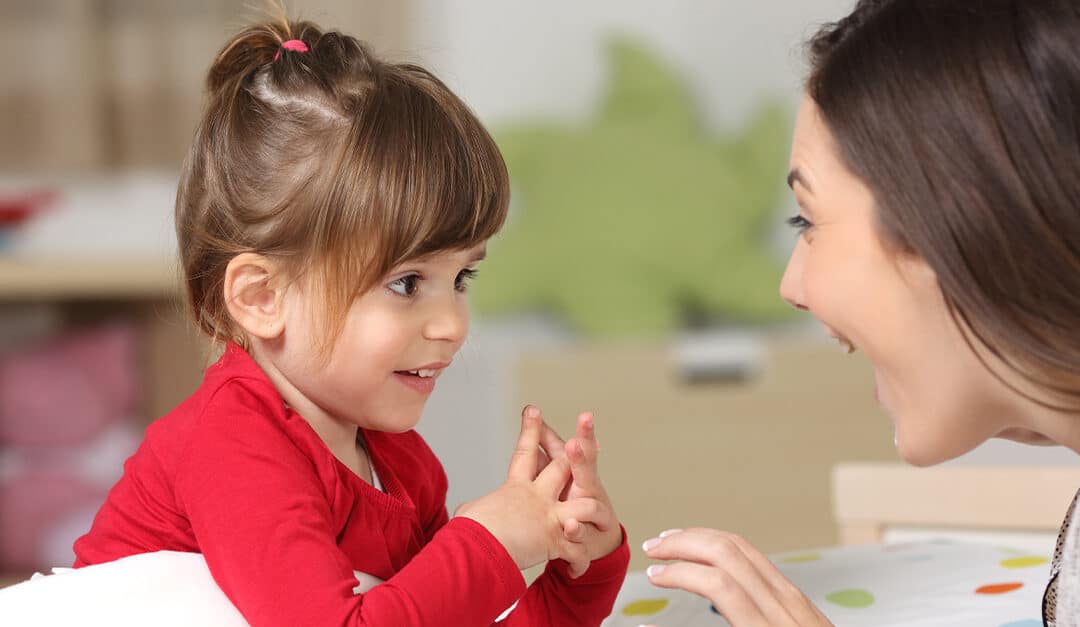Tell me if this sounds familiar: You want your kids to become fluent in Spanish, because you know bilingualism will bring them many benefits. They’re working hard to pick up the new language, but they also seem to be enjoying it.
So why don’t they respond to you in Spanish when you speak that language to them?
This is a frustrating situation for both kids and parents. Your children feel frustrated because they don’t have the Spanish vocabulary to express what they want to say in that language. And you feel frustrated because your efforts to speak Spanish at home don’t seem to be paying off.
It may make you feel better to learn that you’re not alone. This is a common concern we hear from families in which the kids are learning Spanish. And we’ll tell you what we tell them: Your kids’ reluctance to respond in Spanish does not mean they’ll never become fluent. And you can get them to respond more in Spanish without all of you getting irritable with each other.
To help get things back on track, try these strategies from Micah Bellieu, TruFluency Kids’ founder and CEO.
1. Help Kids Fill in Their Spanish ‘Gaps’
The next time you notice that your kid is struggling to respond to you in Spanish, take some of the pressure off of them. Explain to them that you’d like them to say what they can in Spanish, and then you’ll help them fill in what they don’t know.
Here’s an example:
Your kid is trying to say Mi deporte favorito es la gimnasia, porque es divertida. (My favorite sport is gymnastics because it’s fun).
You notice that they’re having trouble and starting to switch to English:. For example:
Mi deporte favorito es la… Hmmm… gymnastics, porque es… fun.
Once you find out what they’re having trouble saying, help them with the Spanish vocabulary they need:
“Gymnastics” in Spanish is gimnasia. And “fun” is divertida.
Finally, ask them to say the sentence again, but this time include the new words they just learned:
You: Now repeat the sentence using the new words you learned, honey.
Your kid: Mi deporte favorito es la gimnasia, porque es divertida.
2. Follow Up to Boost Spanish Retention
Yay! You just helped your kids express themselves by giving them the tools (words) that they needed. But without some conversational reinforcement, they’re likely to forget the Spanish vocabulary you just helped them gain.
However, you can help them retain their new Spanish knowledge. Here’s how: Try to bring up that new word later that hour, that day and that week. This is one of the ways our Spanish teachers at TruFluency Kids make sure learning sticks.
Let’s expand on our example earlier. After that initial conversation, you keep using the word.
One hour after your initial conversation:
¿Quieres ver la competencia de gimnasia en la televisión? ¡Seguro va a estar muy divertida!
(Do you want to watch the gymnastics competition on TV? It’s probably going to be a lot of fun!)
The next day:
Los juegos olímpicos son en un mes y la competencia de gimnasia va a estar super difícil.
(The Olympic Games are in a month, and the gymnastics competition will be super hard).
Next week:
¿Adivina qué? ¡Hoy vi una escuela de gimnasia cerca de la casa! Las clases se veían divertidas.
(Guess what? Today I saw a gymnastics school near home! Classes seemed fun.)
Give Your Child the Gift of Spanish!
3. Give Spanish Beginners Extra Support
If your children are just starting to learn Spanish, getting them to respond to you in that language can be especially challenging. But you can still help them start developing their skills in Spanish conversation. Here’s what Micah recommends:
Start asking short three-word phrases like “¿qué es?” (What’s this?), “¿dónde está?” (Where is it?), “¿de quién es?” (Whose is it?).
Next, help your kids respond with one-word answers, or longer depending on their age and their frustration level at the moment.
Help them learn common phrases such as “¡se me cayó!” This expression will be used every day, so it’ll be super useful for them to learn it.
You should also help them learn lots of nouns; we also use those daily. Tell them what things are, so they know what to call them in Spanish.
Help Your Kids Become Fluent in Spanish
We hope these ideas spark more Spanish conversations in your home. If you’re ready to take the next step in helping your kids learn a second language, we invite you to check out TruFluency Kids online Spanish immersion school.
Our teachers are native Spanish speakers who are also experts at making learning fun. In our classes, students sing, dance, play games, do crafts, and cook in Spanish.
Pretty cool, right?
Parents, we know you’re busy, so we offer flexible schedules and classes from 9 a.m. to 9 p.m. (CST) daily. So no matter where you are, your children can study Spanish with us!
Take a trial class now! They’re super personalized, since each class has no more than six students. After class, join us for a Q&A to learn more about our programs.


